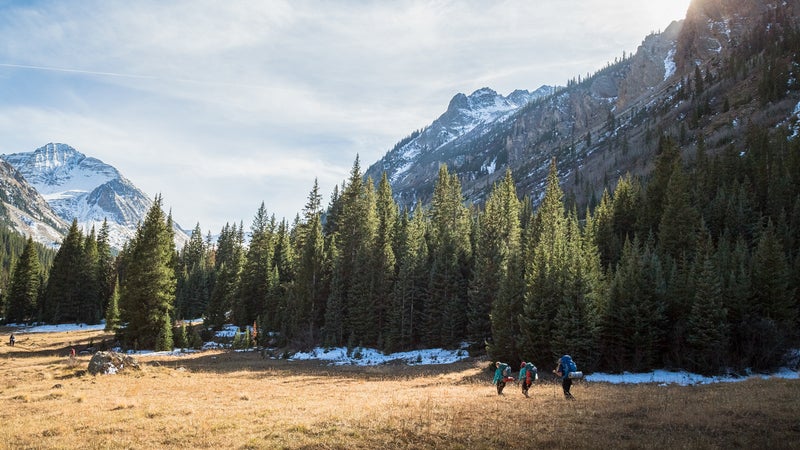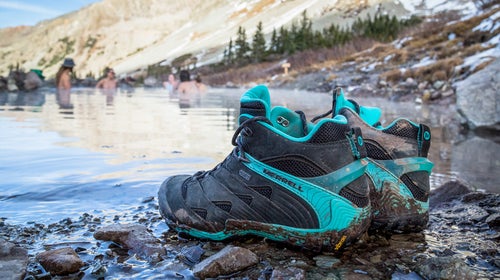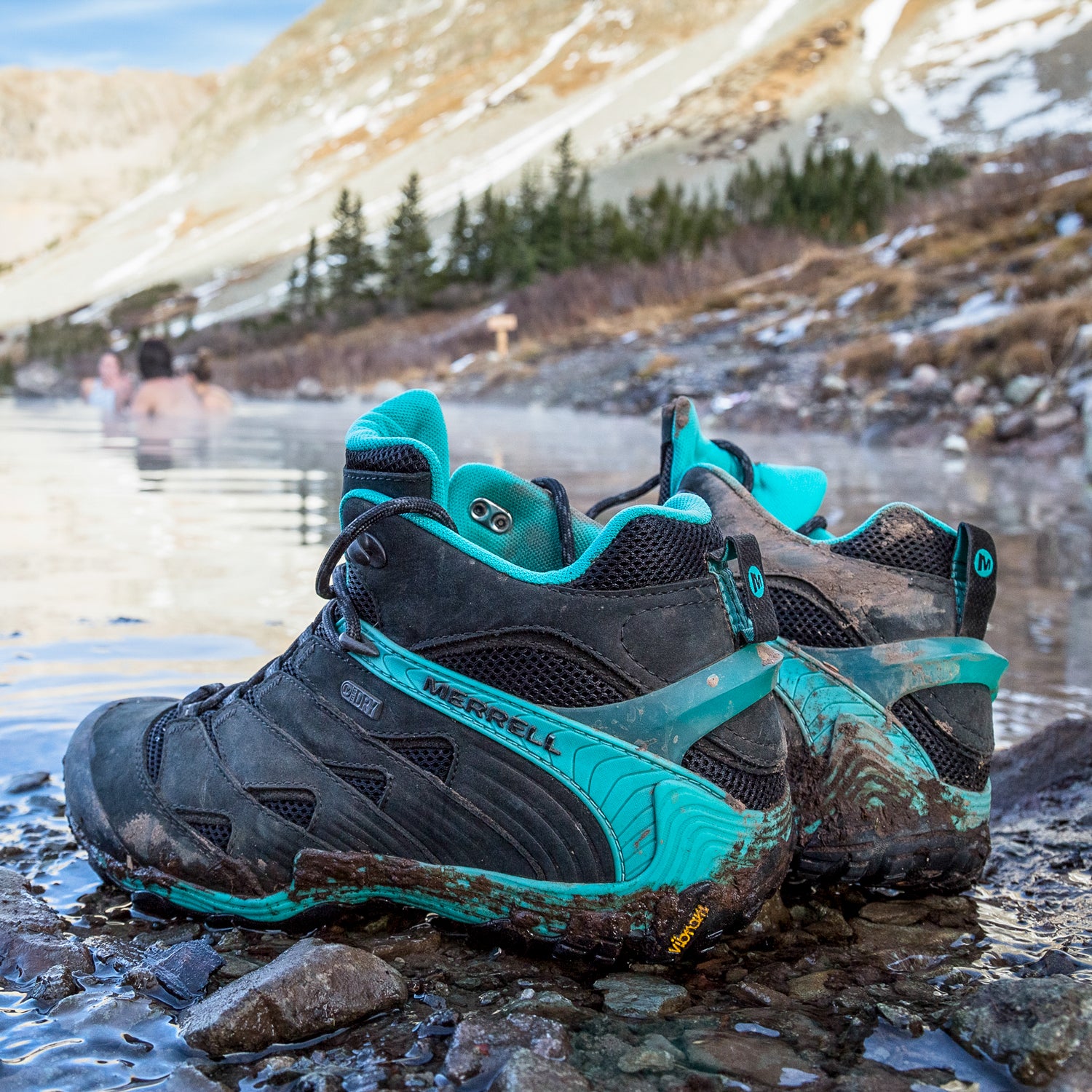There’s one thing you should know about me: I’m a Chaco hiker. Doesn’t matter the terrain or conditions. I like to feel the breeze—and dust, muck, and snow—between my toes. Why? To avoid the dreaded blisters that inevitably come with breaking in a new pair of hiking kicks. So when I signed on for a Merrell trip to test the ($170) by tromping 18 miles through the Maroon Bells–Snowmass Wilderness area over three days, I was convinced my feet would be hamburger by the end. Not so.
Our group started at 8,600 feet on the Conundrum Creek Trail and hoofed it damn near 3,000 vertical feet over nine miles to Conundrum Hot Springs. Being late October and after the high country’s first snow, there were plenty of obstacles along the trail. Exposed roots. Mud. Creek crossings. Talus. More mud. Scree. Ice. Snow. Did I mention there was mud? The Chameleon, available now in men’s and women’s models, held up.

What struck me off the bat about the Chameleon was how Merrell—as the brand has done in the past—made such a sturdy shoe at this weight that’s still forgiving on my dogs. A pair in men’s size 9 tips the scales at 2.2 pounds, about as light as they come for mid-top hikers. But the shoes easily supported me and my 40-pound pack, keeping me upright on icy stretches.
That’s thanks to a couple things. First is the new and lightweight Flexplate, a proprietary stabilizer sandwiched between the Vibram rubber outsole and an EVA midsole that provides support without having to beef up other parts of the shoe, thus keeping the overall weight down. This lent the Chameleon more of a trail-runner feel than that of a burly, clunky hiker. It wrapped around obstacles like those exposed roots instead of seesawing over them. Second is the well-structured and cushioned heel (as a heel striker, I especially appreciated this). In it, a molded plastic counter held its shape, while an Air Cushion insert—essentially a disc of firmer foam inserted in the midsole under the heel—added stability and absorbed shock.
Back in my marathon days, I’d judge a shoe’s worth primarily on how my knees felt after powering through 26-plus miles. We weren’t sprinting along pavement for this test, but after descending the 3,000 feet with the loaded pack in half a day, my knees didn’t feel like they’d been ground to dust. I even switched over to actual trail runners for a solo ten miles on the Snowmass singletrack.
Now about that mud. The Chameleon’s three-millimeter lugs plowed through it and didn’t slip when the terrain turned icy. And the buttery nubuck upper was comfy and warded off water, thanks to Merrell’s in-house membrane. When water did creep over the top during creek crossings, the vented mesh panels on the upper allowed the Chameleon to dry quickly.
I’m not at the point where I’d fully retire my Chacos, but now whenever I want to move fast with a heavy pack, I’ll turn to the Chameleon 7.


